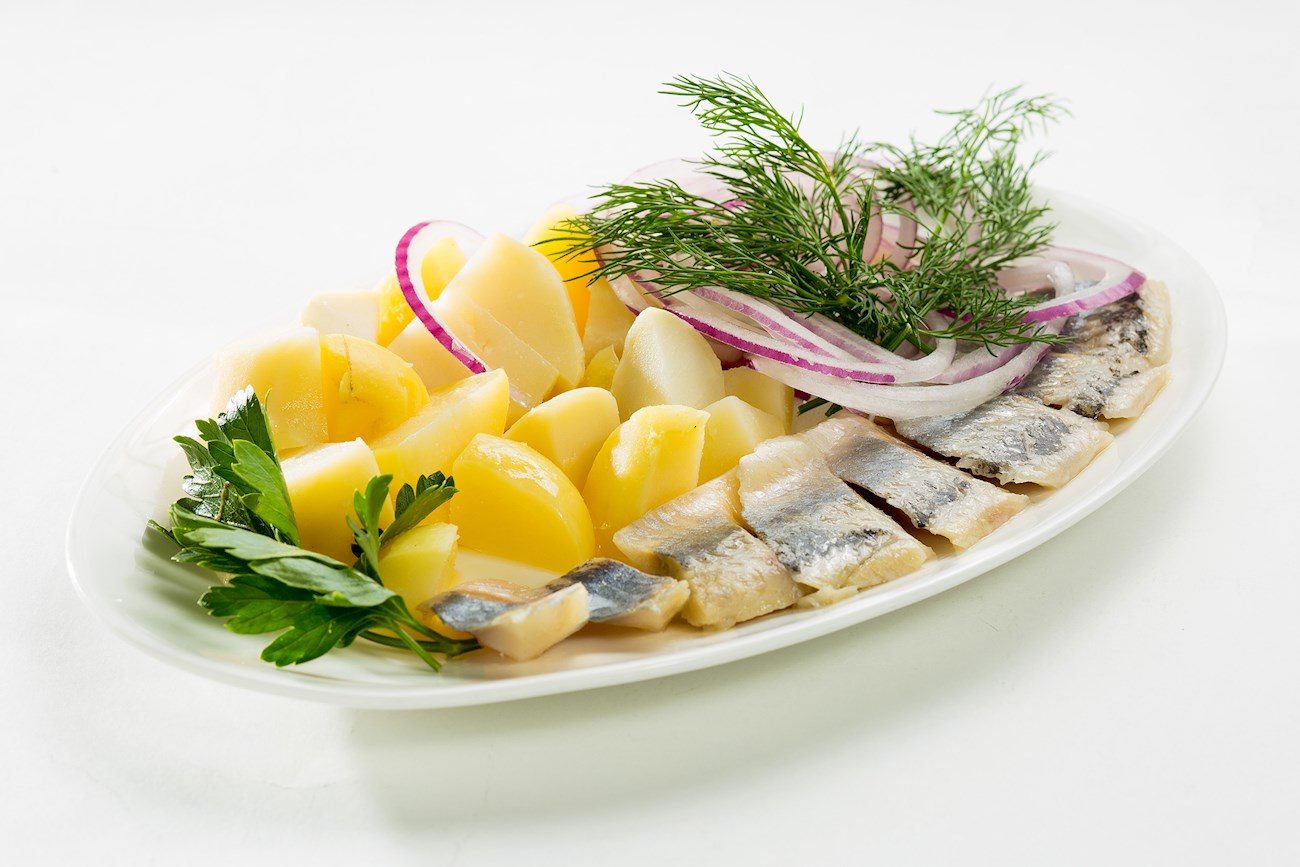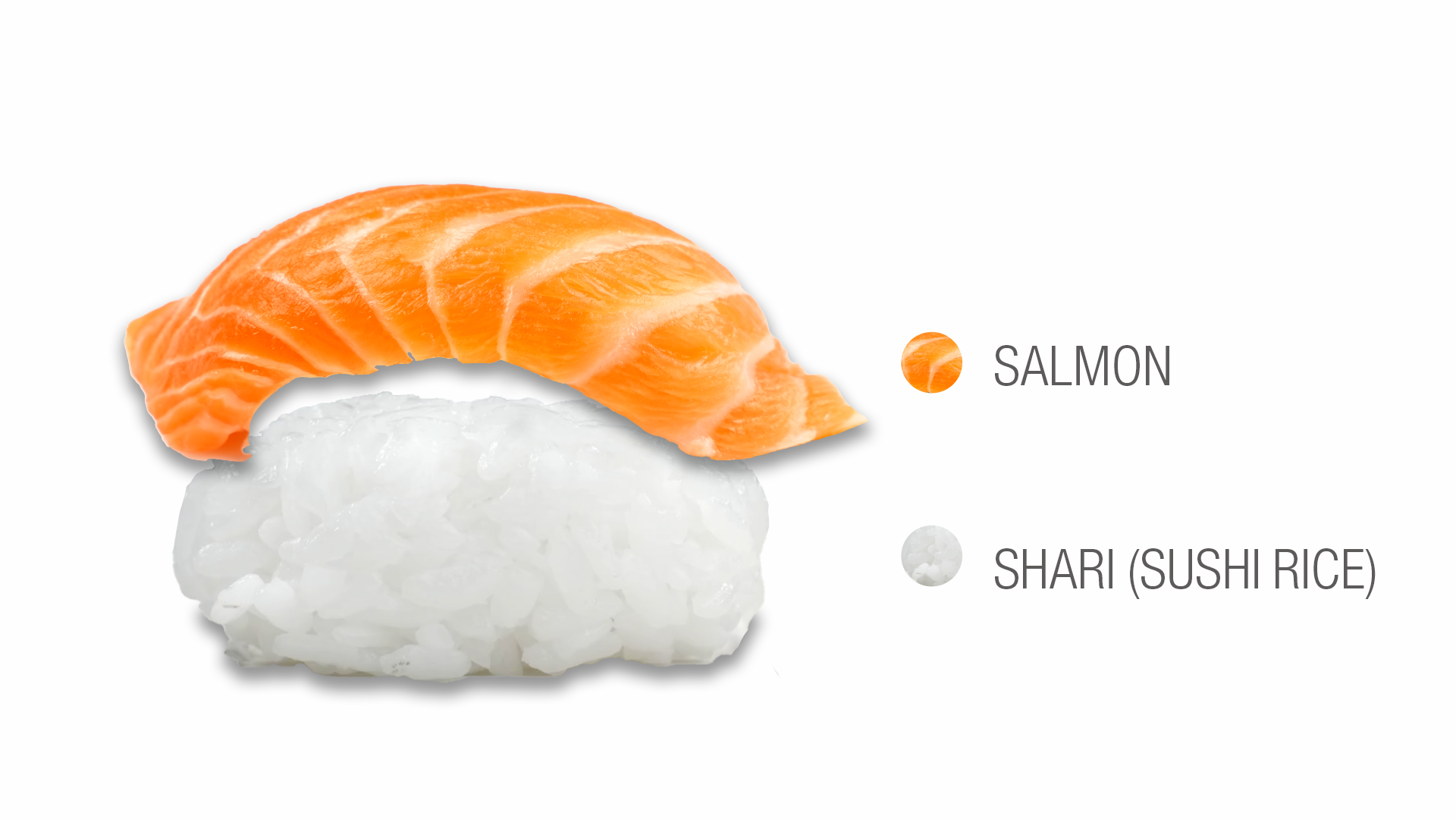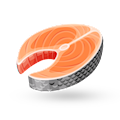Sake nigiri sushi is a Japanese type of nigiri sushi, with origins in Norway. It consists of hand-pressed sushi rice that's topped with slices of salmon. The dish has a soft texture and a clean finish that makes it good for sushi newcomers, although the flavor can be a bit fishier than maguro (tuna) nigiri sushi.
Traditionally, this type of sushi is eaten by hand in a single bite. It's usually accompanied by soy sauce, wasabi, or pickled ginger (gari) on the side.
Sild og poteter is a traditional dish originating from Norway. The dish is usually made with a combination of herring fillets, potatoes, pickled and sliced beets, onions, butter, dill, and sour cream. The herring fillets are placed on a platter and garnished with sliced beets and sliced onions.
The combination is topped with sour cream and dill sprigs, and it's then served accompanied by boiled buttered potatoes sprinkled with dill. The dish is especially popular during summer.
MAIN INGREDIENTS
In Denmark, fried plaice fillets are a restaurant staple as well as a common home cooked meal. They are usually breaded or lightly dusted with rye flour before they are pan-fried until golden and crispy. Fillets are often incorporated in the open-faced stjerneskud, a variety of smørrebrød, but are also commonly enjoyed as the main course, usually accompanied by potatoes, Danish rémoulade, parsley sauce, salads, sautéed vegetables, or lemon wedges.
Stekt fisk is a traditional fish specialty that is made by braising seasoned and floured fish fillets in melted butter. Although it usually features smaller fish varieties, this dish can be prepared with various types of fish. With a slightly crispy crust on the outside, the tender pieces of fish are typically drizzled with the braising sauce before serving, and they are usually paired with some creamed peas or creamed carrots and boiled potatoes on the side.
Sursild is a Norwegian pickled fish delicacy that is traditionally consumed during the winter holiday season, particularly on Christmas. The dish is usually made by combining slices of salted herring, onion slices, and a variety of spices such as allspice, black peppercorns, and mustard seeds in a jar, which is then filled with a boiled vinegar-based mixture.
A common breakfast meal, the pickled fish is usually consumed with slices of fresh bread, smeared with butter, and topped with onion slices, or with a side of boiled potatoes as a part of a large dinner. In Norway, jars of pre-made pickled herrings are also sold in numerous supermarkets in the country.
MAIN INGREDIENTS
Danish fiskefrikadeller are traditional pan-fried fish patties. They are made with a creamy mixture of ground white fish fillets, eggs, milk, onions, and various spices and fresh herbs. Some varieties often incorporate cream, breadcrumbs, and other seafood ingredients such as salmon and shrimps.
These nutritious fish cakes are enjoyed as the main course and are usually accompanied by buttered boiled potatoes, Danish rémoulade, and lemon wedges.
MAIN INGREDIENTS
Bergensk fiskesuppe is a traditional fish soup originating from Bergen. Although there's an ongoing debate about what should be in the soup, it often contains pollock or salmon, pickled purslane, vegetables such as onions, carrots, leeks, and celery, sour cream, vinegar, salt, pepper, sugar, and traditionally, but rarely in practice - the bones of young saithe.
Alternatively, the bones of haddock or cod are also acceptable for making the fish stock. Fish balls are sometimes also added to the soup. Before serving, Bergen fish soup is topped with a dollop of sour cream. If desired, garnish the soup with chives and serve it with crusty bread on the side.
MAIN INGREDIENTS
Stegt rødspætte is a traditional fish dish consisting of pan-fried plaice. The dish is usually made with a combination of plaice, rye flour, olive oil, butter, lemon, parsley, salt, pepper, and new potatoes. The fish is patted dry, seasoned with salt and pepper, and coated with rye flour.
It is then fried in a pan in a mixture of olive oil and butter on both sides until fully cooked. In another pan, butter is cooked with lemon slices and parsley. The fish is served on a plate and it’s topped with butter, lemon, and parsley. Boiled new potatoes make a classic accompaniment to this fish dish.
MAIN INGREDIENTS
Inlagd sill or pickled herring is a Swedish fish dish that has long been served in Sweden at Midsummer, Christmas, and Easter celebrations. The dish consists of cleaned, skinned, and salted herring that is soaked in a marinade of vinegar, sugar, chopped onions and carrots, allspice, bay leaves, pepper, and crushed peppercorns.
Before serving, the fish is cut into thick slices and it is traditionally garnished with minced red onion and sprigs of fresh dill. As always, Swedish snaps (shots of strong alcoholic beverages) are more than welcome to accompany this dish.
Persetorsk is a traditional fish dish originating from Bergen. The dish is usually made with a combination of cod, sugar, salt, dill, bacon, and a sauce consisting of shallots, green peas, crème fraîche, vinegar, and dill. The cod is pressed for a long time in a solution of sugar and salt, and the fish is then cut into pieces and fried in bacon fat until the skin becomes crispy.
The fried pieces of cod are served on a plate and the sauce is poured over it. The dish is traditionally served with munavoi, a mixture of hard-boiled eggs and butter.
TasteAtlas food rankings are based on the ratings of the TasteAtlas audience, with a series of mechanisms that recognize real users and that ignore bot, nationalist or local patriotic ratings, and give additional value to the ratings of users that the system recognizes as knowledgeable. TasteAtlas Rankings should not be seen as the final global conclusion about food. Their purpose is to promote excellent local foods, instill pride in traditional dishes, and arouse curiosity about dishes you haven’t tried.















